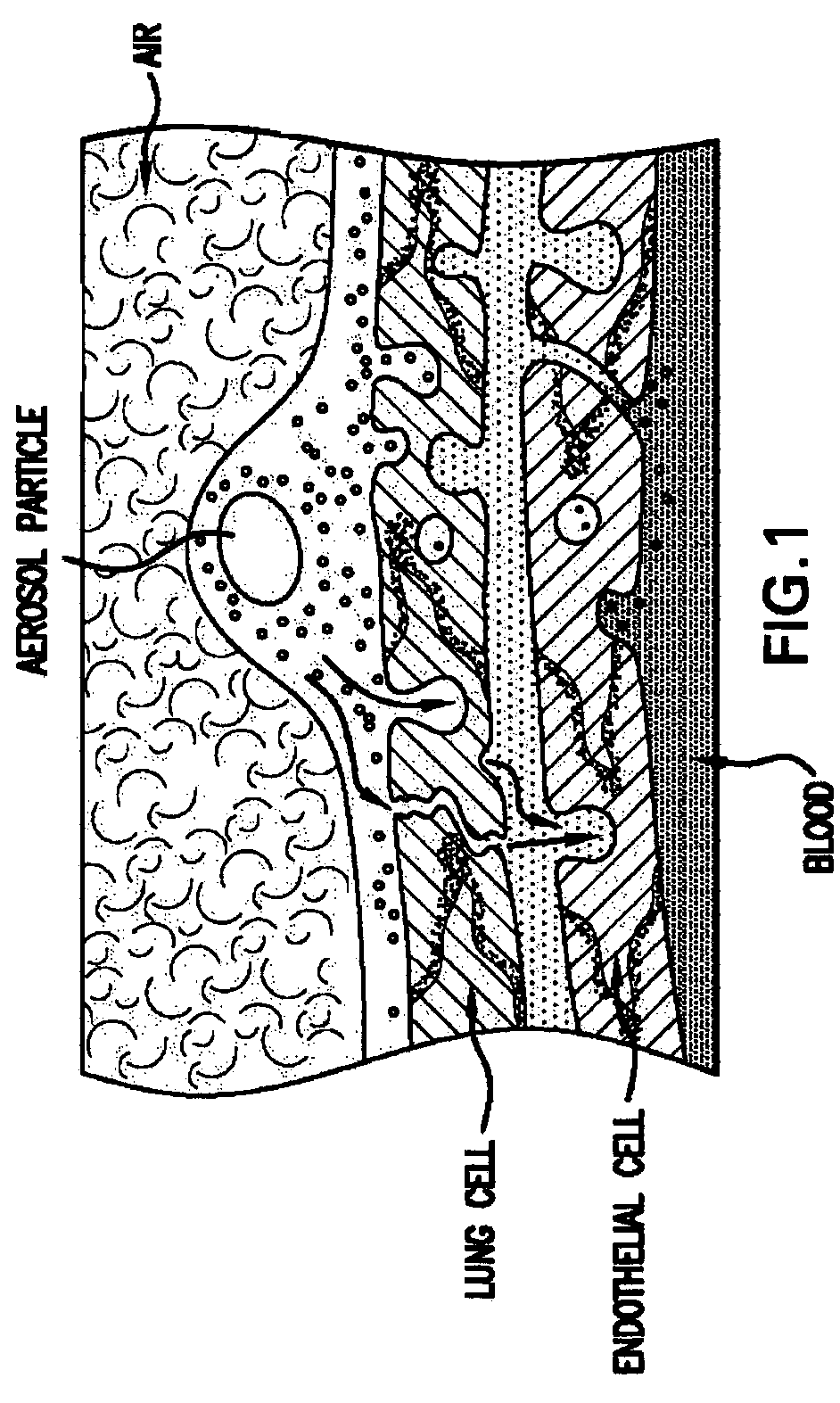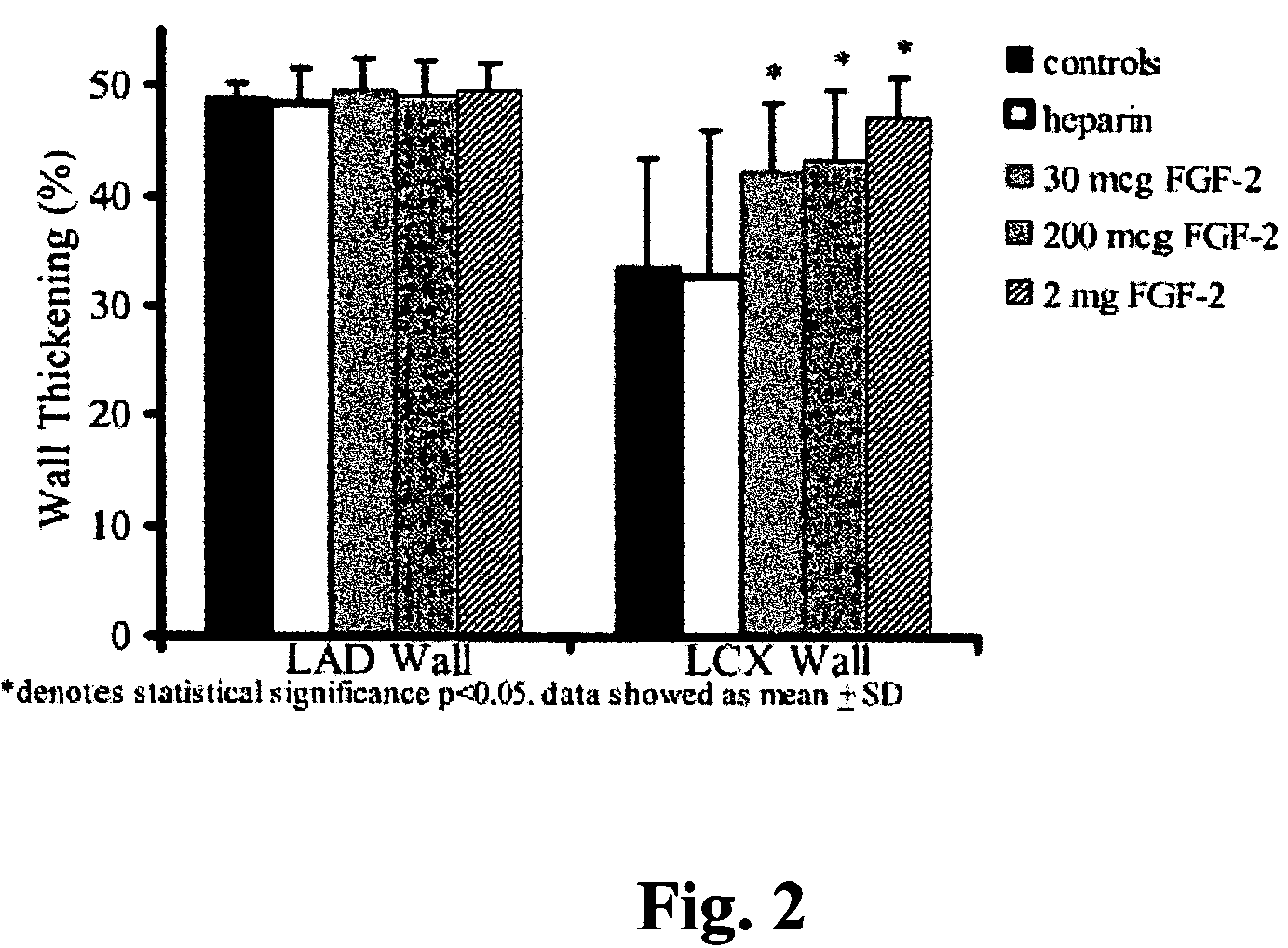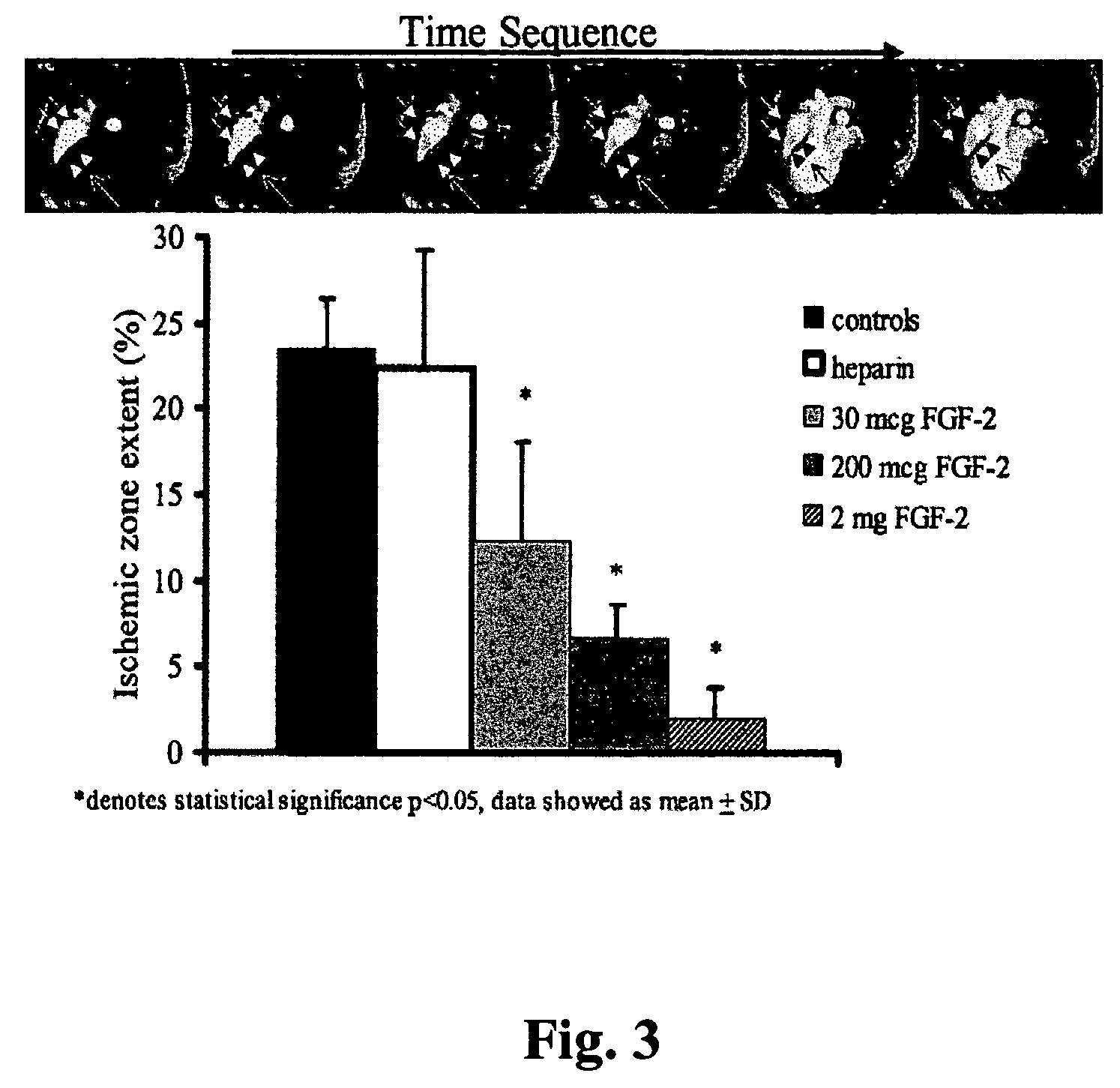Growth factor therapy mobilization of stem cells into the peripheral blood
a technology of growth factor therapy and peripheral blood, which is applied in the field of peripheral blood stem cell isolation, can solve the problems of ineffective replacement of destroyed cardiomyocytes, inability to adequately repair organs, and inability to effectively replace damaged cardiomyocytes, etc., and achieves the effect of reducing the number of apheresis procedures, reducing the number of stem cells, and improving the yield of stem cells
- Summary
- Abstract
- Description
- Claims
- Application Information
AI Technical Summary
Benefits of technology
Problems solved by technology
Method used
Image
Examples
example 1
Intracoronary Injection of FGF-2 in the Treatment of Severe Ischemic Heart Disease: A Maximally Tolerated Dose Study
[0046]Patient selection. The study was conducted at two centers, the Beth Israel Deaconess Medical Center (Boston, Mass.) and Emory University Hospital (Atlanta, Ga.), and patients were enrolled between December 1997 and July 1998. The study was approved by the Institutional Review Boards at both hospitals. The inclusion criteria selected for patents with advanced CAD with inducible ischemia and who were considered to be suboptimal candidates for either PTCA or CABG. Patients were excluded from the study if they had any of the following criteria: uncompensated congestive heart failure or an ejection fraction<20%; a myocardial infarction within three months; new onset of angina or unstable angina within three weeks; PTCA, CABG, stroke or transient ischemic attack within six months; uncontrolled hemodynamically significant arrhythmias; critical valvular disease; restrict...
example 2
Safety and Efficacy of a Single Intrapericardial Injection of FGF-2 In a Porcine Model of Chronic Myocardial Ischemia
[0070]Chronic Myocardial Ischemia Model. Yorkshire pigs of either sex weighing 15 to 18 kg (5-6 weeks old) were anesthetized with intramuscular (i.m.) ketamine (10 mg / kg) and halothane by inhalation. A right popliteal cut-down was performed and a 4 French arterial catheter was inserted for blood sampling and pressure monitoring. Left thoracotomy was performed through the 4th intercostal space. The pericardium was opened, and an ameroid constrictor of 2.5 mm i.d. (matched to the diameter of the artery) was placed around the left circumflex coronary artery (LCX). The pericardium was closed using 6-0 Prolene suture, (J&J Ethicon, Cincinnati, Ohio) and the chest was closed. A single dose of i.v. cefazolin (70 mg / kg) was given, and i.m. narcotic analgesics were administered as needed. Animals then were allowed to recover for 3 weeks (time sufficient for ameroid closure) be...
example 3
Nonmitogenic Effects of Administration of FGF-2 in Acute Myocardial Ischemia and Reperfusion in a Murine Model
[0096]To determine whether nonmitogenic effects of FGF-2 could be beneficial to the heart during acute myocardial ischemia and reperfusion, FGF-2 is administered in a murine model of myocardial stunning. The advantages of this mouse model are well-defined markers of ischemia-reperfusion injury, including ischemic contracture, alteration in calcium homeostasis, and prolonged ventricular dysfunction, occurring within a time window too short to activate the mitogenic properties of FGF-2. Transgenic mouse hearts deficient in the expression of the inducible isoform of NOS (NOS2− / −) are used to further investigate the coupling of FGF-2 and NO during acute myocardial ischemia and reperfusion.
[0097]Stunning. Myocardial stunning is the phenomenon whereby an ischemic insult interferes with normal cardiac function, cellular processes, and ultrastructure for prolonged periods. Numerous ...
PUM
 Login to View More
Login to View More Abstract
Description
Claims
Application Information
 Login to View More
Login to View More - R&D
- Intellectual Property
- Life Sciences
- Materials
- Tech Scout
- Unparalleled Data Quality
- Higher Quality Content
- 60% Fewer Hallucinations
Browse by: Latest US Patents, China's latest patents, Technical Efficacy Thesaurus, Application Domain, Technology Topic, Popular Technical Reports.
© 2025 PatSnap. All rights reserved.Legal|Privacy policy|Modern Slavery Act Transparency Statement|Sitemap|About US| Contact US: help@patsnap.com



